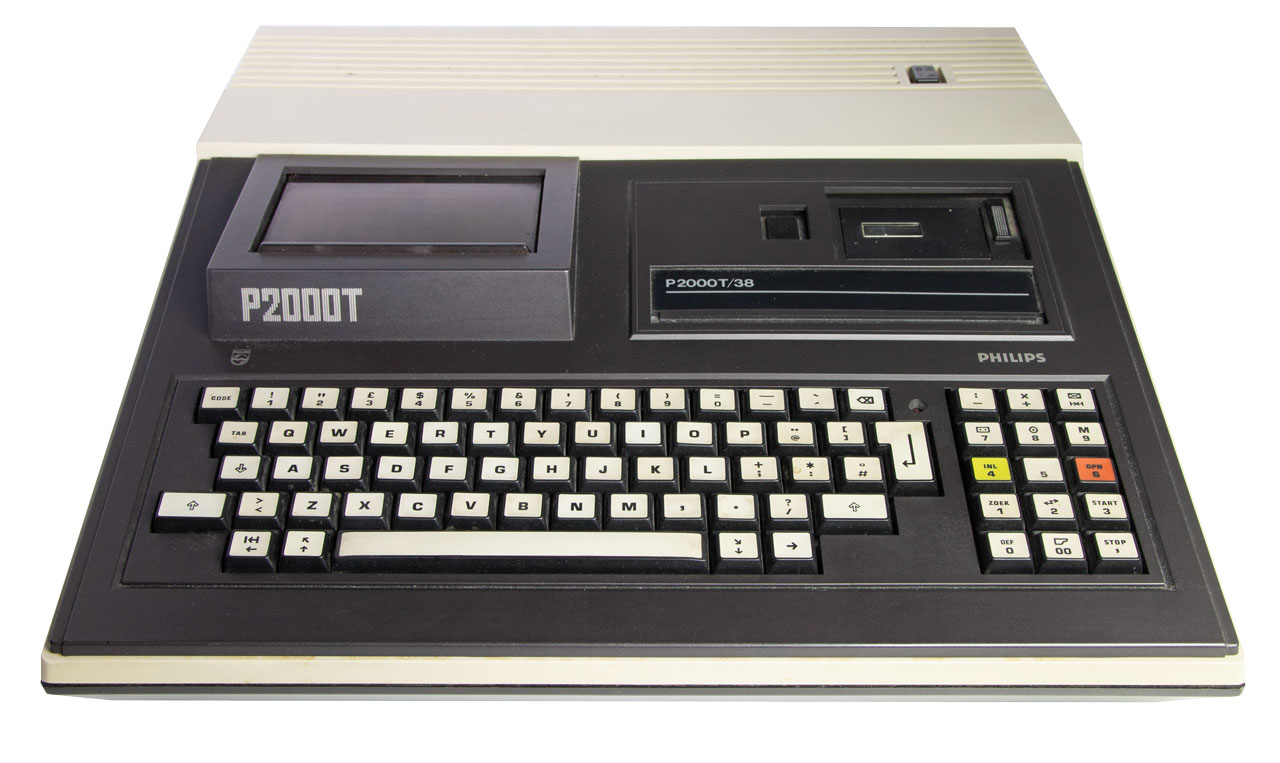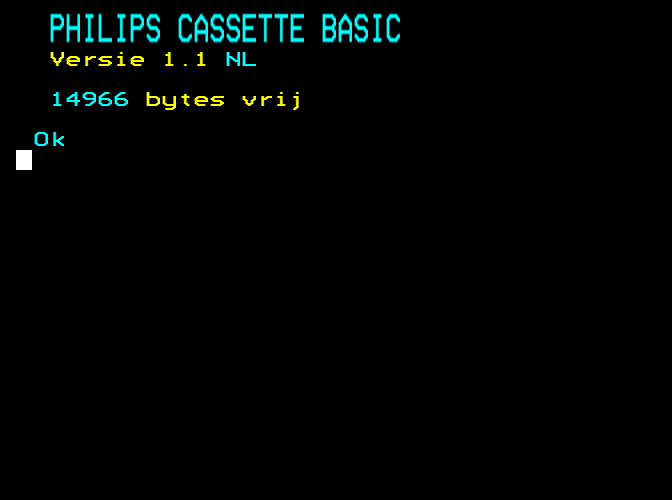My first computer#
I have very fond memories of the Philips P2000T as it was the first computers I worked with as a kid. The year was 1993 and things were different back then. Although almost every household had a television and a telephone, computers were relatively rare. People were actively doubting whether this computer thing would really catch on or whether this was a temporary hype.
Like many other households, we did not have a computer at home. It was only until 1995 that I got an second-hand MS-DOS computer hosting a 80286 processor from my godfather. Luckily for me, the primary school that I attended had two of these machines. Most likely, they got their way there via a government project getting computers into Dutch classrooms. When we are done with our study task, we were allowed to play - predominantly educational games - on these machines.

The Philips P2000T, introduced in March of 1980.#
The P2000T machine sports a Zilog Z80 processor, running at about 2.5 MHz. It has 16 KiB of memory and uses a Mullard 5050 teletext chip for the graphics. This means that these machines had no high-resolution graphics like we know today, but a form of character graphics. The screen is basically composed of a 40 x 24 grid of characters. The computer booted via an internal 1 KiB ROM chip which contained a relatively primitive BIOS. Via a cartridge, a BASIC environment could be loaded.

The boot screen of the P2000T, showing that the machine has 16KiB of memory of which current 14966 bytes are available.#
It was possible to load programs into the computer via a mini-cassette (tape) drive. Philips used the same tapes as they also used for there their hand-held voice recorders. These tapes stored about 43 KiB of data. Loading a program into the computer took some time. First, one had to browse through the tape to get an index of all the programs stored on the tape. Then, the tape had to be rewinded and the program of interest had to be selected. The tape drive would then move towards the position on the tape where the program was located and load the program into memory. This could easily take a few minutes. Of course, everybody was used to waiting and nobody was really bothered by this.
In the summer of 2021, nostalgia really hit me and I looked around on Marktplaats, a popular Dutch second hand market place website, and found a P2000T for a very good price. As is typical for P2000T, the power switch was broken but it did come with a 16 KiB memory expansion for a total of 32 KiB of memory. It belonged to a retiree who used to run a snackbar (cafeteria). He also had the original BASIC cartridge as well as a Familiegeheugen cartridge. Moreover, there were 6 tapes with a bundle of nice programs on it.
Getting my hands on an vintage Philips P2000T sparked my curiosity and I started searching the web on what I could find about the machine. For many people, they were the their first computer. The machine was built like a tank and many still last in near-perfect condition today. Lots of documentation on the machine is available as well as a still active retro-community. There is an emulator and a large archive of documents as well as software.
It did not take long before I started tinkering with the machine. I developed a memory expansion, a multirom cartridge and even a cartridge to allow the machine to interface with an SD-card. It is truly a great joy developing modern hardware for this machine.